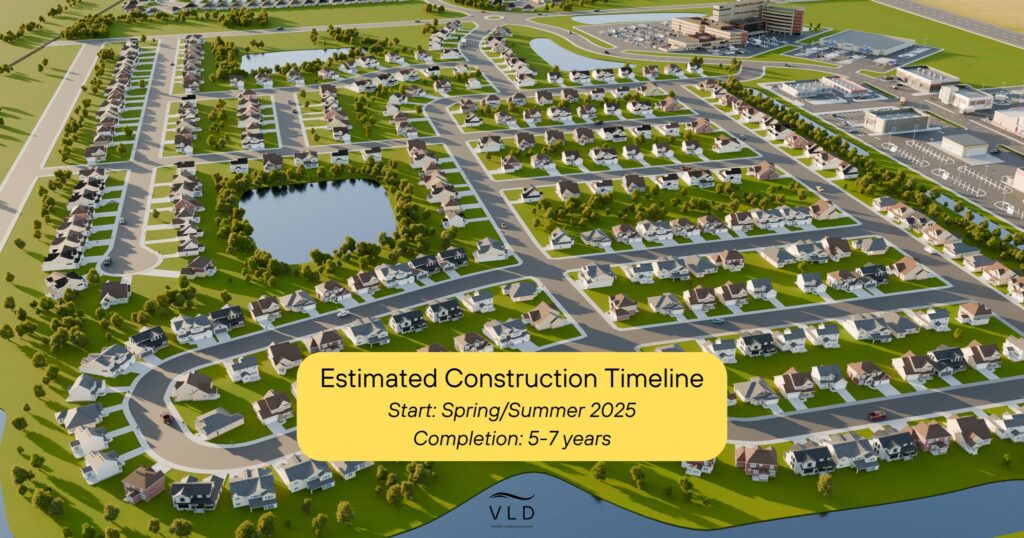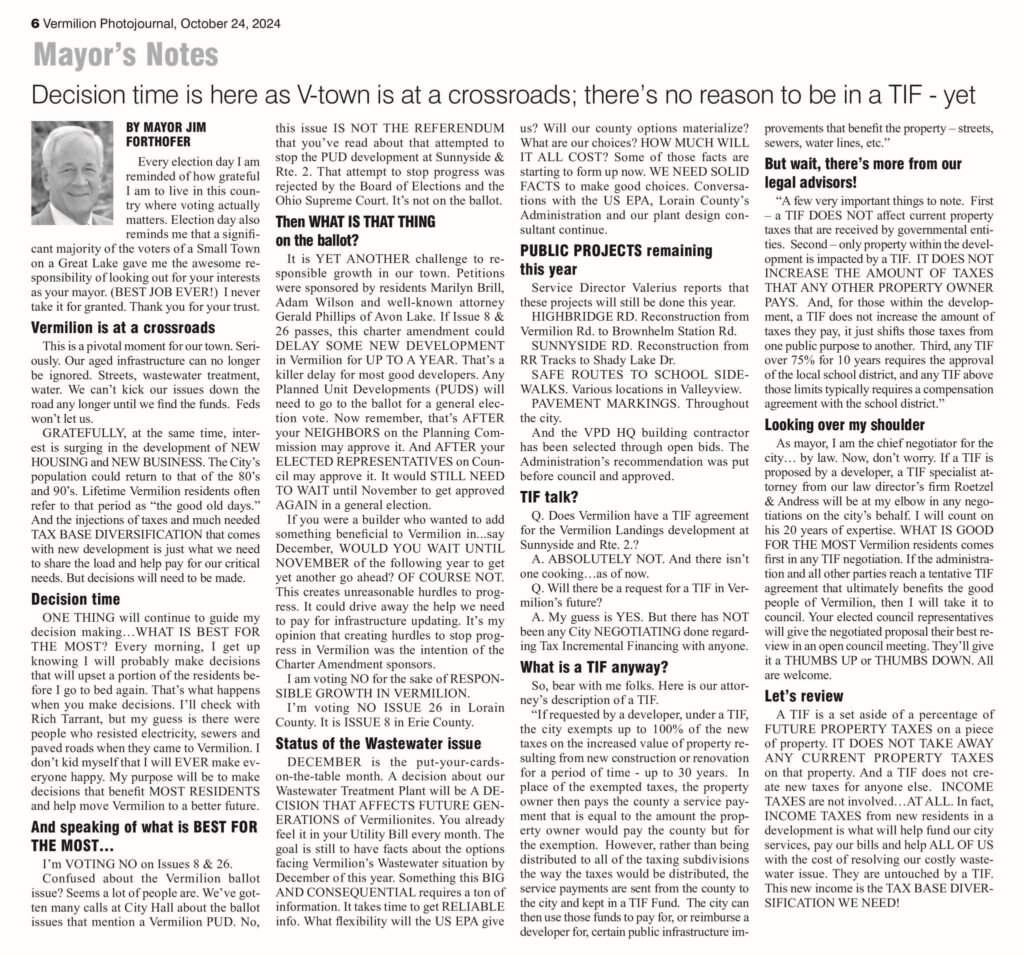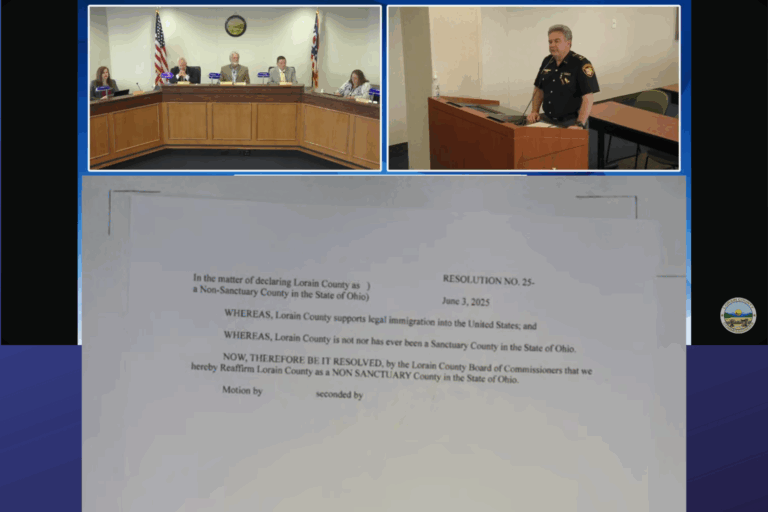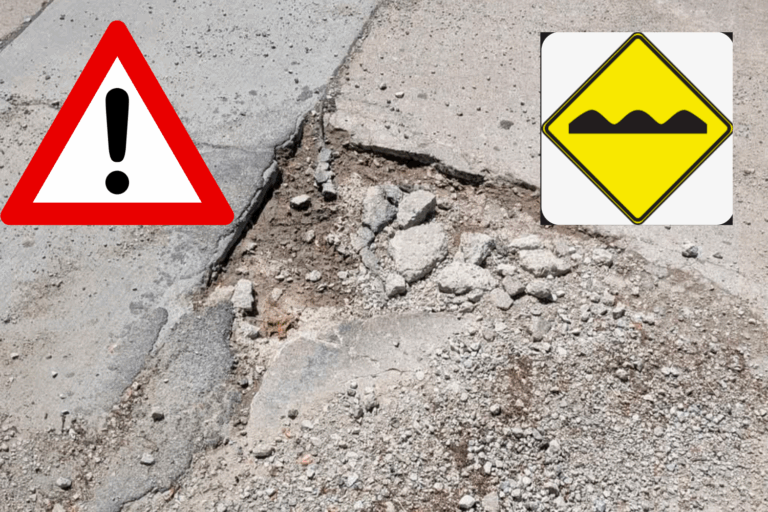
Vermilion’s Development Divide: Citizens Push for Responsible Growth Amidst City’s Push for Tax Revenue
Vermilion, Ohio, a quiet city nestled on the shores of Lake Erie, has long been known for its picturesque views and small-town charm. But as the city faces increasing pressure to grow, a battle is brewing between the people who call it home and the government pushing for development that could change the landscape forever.
At the heart of the controversy is the proposed “Vermilion Landing” development—a massive plan to build 600 to 700 single-family homes, accompanied by commercial businesses, on nearly 300 acres near Sunnyside Road and Route 2. The developer behind the project sees it as a natural step for the city, calling it an opportunity to address a growing housing shortage and boost the local economy. However, for many residents, this development is more than just another housing project—it’s a threat to the very character of their beloved community.

The concerns voiced by local residents are not just about the scale of the development, but about the fundamental changes it could bring to their way of life. Marilyn Brill, a 45-year resident of southeast Vermilion, sums up the sentiment of many when she says, “We are country. We are on the outskirts of Vermilion.” She and her neighbors—organized as Concerned Vermilion Citizens (CVC)—are worried that the peaceful, rural atmosphere they cherish could be lost forever if the city allows this project to move forward.
For some, the land is more than just a place to live—it’s a piece of history. Carrie Ott, another member of CVC, expresses deep concern about the environmental impact of the development. “Part of this property was owned by my family in the past, and it has designated wetlands on it,” she says. “I’m really concerned about that and about the protection of the two eagles’ nests that are there.”
Residents argue that the development would fundamentally alter the nature of their quiet neighborhood. “It’s those quiet homes in that quiet neighborhood that draw people here,” one resident says. “To put in 650 homes across the street from all of them is a betrayal to them of why they bought their property and invested in their homes.”
But the city government, led by Mayor Jim Forthofer, sees the project differently. With Vermilion’s population hovering around 10,600, the city faces a significant housing shortage—a challenge that Forthofer believes the city must address in order to attract businesses and stimulate economic growth. The proposed Vermilion Landing development, he argues, would add roughly 10% to the city’s population, generating millions in tax revenue and much-needed resources for the community.

Forthofer acknowledges the challenges but sees growth as an inevitable part of Vermilion’s future. “Development’s not a bad thing,” he insists. “People sometimes refer to the ‘good old days’ of Vermilion, when we had quite a few grocery stores, a lot of schools. But in those days, the population was more than it is now.” His focus on revenue growth is clear—an influx of new residents means more property tax revenue for the city and additional income tax for local schools, which would help fund essential services.
However, for residents, it’s not just about the numbers. It’s about the impact on their quality of life. The push for growth comes with serious concerns about infrastructure—specifically, the state of the city’s roads and schools. “We need our roads fixed before we start adding hundreds of more cars,” says Anderson. Local roads, already stretched thin, are one of the major points of contention, as the addition of new homes could overwhelm the current infrastructure.
The Firelands Local School District, too, is at capacity. Citizens worry that the sudden influx of new students could overwhelm the already strained system, making it difficult for current students to receive the education they deserve.
Yet, despite these concerns, the city seems determined to press forward. In the summer, the Vermilion City Council approved a Planned Unit Development (PUD) to allow for higher-density zoning in the proposed area. In response, CVC launched a petition to force a referendum on the matter, giving residents a chance to vote on the development. However, when the Lorain County Board of Elections initially certified the referendum for the November ballot, the developer protested, pointing out missing documentation. The referendum was pulled from the ballot, and a legal battle over its future ensued.
The frustration felt by residents is palpable, especially given the perceived lack of transparency and consultation from the city government. “Most people were very, very receptive and were thanking us,” says Ott of the petition drive, signaling that many residents are not convinced by the city’s assurances.
In addition to the referendum fight, Vermilion voters also faced Issue 26 in November—a measure that amended the city’s charter to require future PUDs to be approved by the public. While this measure gave citizens more power over the scale of growth in their city, Forthofer and other city officials expressed concerns that it could slow down development, potentially hindering Vermilion’s economic progress. Issue 26 passed, giving residents a stronger voice in shaping the future of the city’s growth.
For many residents, the issue isn’t about whether Vermilion should grow—it’s about how that growth should happen. They want to see infrastructure improvements, such as road repairs and better schools, before any large-scale developments are approved. For them, growth shouldn’t come at the expense of the community’s well-being.

As the battle over Vermilion Landing continues, it’s clear that the city’s future hangs in the balance. The question remains: Can the city strike a balance between growth and preservation, or will the push for tax revenue and economic development drown out the voices of those who call Vermilion home?






The city can’t pay for infrastructure with money they don’t have! Property taxes pay for that. Or would you rather they borrow the money through issuing bonds? Which you will pay for through your taxes??
And schools can handle the gradual buildout of VL…50 to 100 homes over 5 to 10 years. Of course neighbors of the development are most impacted. The mayor has said he makes decisions based on doing the most good for the most people. Can’t make everyone happy. And if minority voices are loudest Issue 26 will stagnate the city and discourage development.
why…Vermilion is already over crowded. Don’t ruin a good city
What about the wetlands that were
established there many years ago?
Also the bald eagles that have been a
Part of this area for years.
Where is their voice! We the people
have to be their protectors.
Quite well stated… The issue is “positive” revenue or “incremental” revenue. Growth is not necessarily synonymous with real revenue. Open and honest discussion on this issue should be encouraged by the city administration. Tax paying citizens have a constitutional right to voice their concerns. Rather than marginalizing, disparaging and disenfranchising citizens that might disagree with the administration, they would be better served respecting and listening to taxpayers that voice legitimate concerns that would otherwise be ignored. The President of Council penned a Hilary Clinton “despicables” letter to our local newspaper… yet some of those citizens might have voted for him, but surely all of them pay taxes that service his salary. Vermilion deserves better leadership than that. In hopes of restoring more unity in our community I will be running for Mayor next year. There is a growing perception by many of our citizens that our city government is not inclusive nor transparent. The repeated claim by the administration is they are only doing what is best for “all” of our citizenry. That veiled attempt to validate their actions certainly rings hollow with those that would disagree. Time for a new leader that will provide an open and accountable administration that respects and serves all citizens… Including those that would disagree… Russ Owens #Russ for Us.